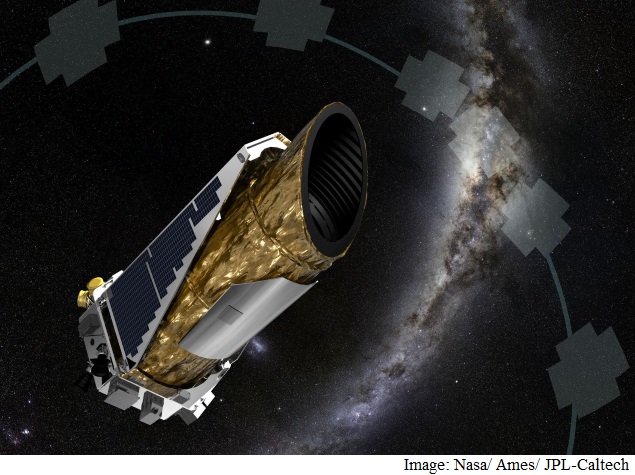Nasa's Kepler Space Observatory Finds New Exoplanet

Nasa's planet-hunting Kepler spacecraft has made a comeback with the discovery of the first exoplanet found using its new K2 mission.
The new exoplanet called HIP 116454b is 2.5 times the diameter of the Earth and follows a close, nine-day orbit around a star.
HIP 116454b and its star are 180 light-years away from the Earth, toward the constellation Pisces, the US space agency said in a statement.
The discovery was made when astronomers and engineers devised an ingenious way to re-purpose Kepler for the K2 mission and continue its search of the cosmos for other worlds.
"Last summer, the possibility of a scientifically productive mission for Kepler after its reaction wheel failure in its extended mission was not even part of the conversation," said Paul Hertz, Nasa's astrophysics division director at the agency's headquarters in Washington, DC.
The discovery was confirmed with measurements taken by the HARPS-North spectrograph of the Telescopio Nazionale Galileo in the Canary Islands.
Kepler's on board camera detects planets by looking for transits when a distant star dims slightly as a planet crosses in front of it, the statement added.
Small planets like HIP 116454b, orbiting nearby bright stars, are a scientific sweet spot for K2 as they are good prospects for follow-up ground studies to obtain mass measurements.
Using K2's size measurements and ground-based mass measurements, astronomers can calculate the density of a planet to determine whether it is likely a rocky, watery or gaseous world.
"The Kepler mission showed us that planets larger in size than Earth and smaller than Neptune are common in the galaxy, yet they are absent in our solar system," said Steve Howell, Kepler project scientist.
K2 is uniquely positioned to dramatically refine our understanding of these alien worlds and further define the boundary between rocky worlds like Earth and ice giants like Neptune," Howell added.
The paper is forthcoming in The Astrophysical Journal.
Post Your Comments for this News
Science Articles
-
How To Boost Student's Interest In Science
2017-04-07 11:57:27
-
Know about the Father of Standard Time
2017-01-07 12:34:58
-
10 Ways In Which Exercise Benefits Your Brain
2016-08-16 11:40:57
-
China's Development
2015-09-08 15:17:15
-
20 lice found on minor's eye lashes in China
2015-09-08 15:14:53